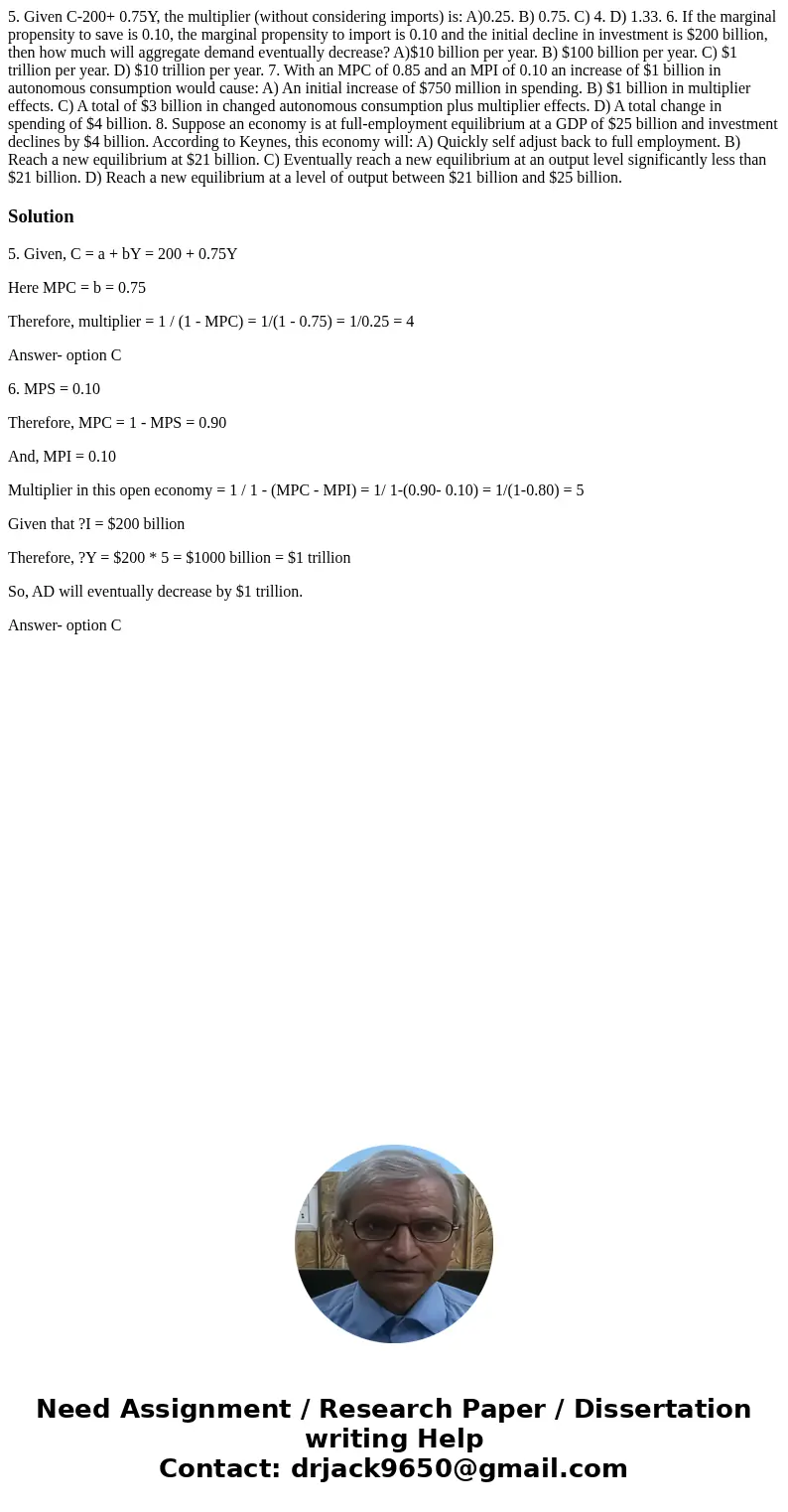5 Given C200 075Y the multiplier without considering imports
5. Given C-200+ 0.75Y, the multiplier (without considering imports) is: A)0.25. B) 0.75. C) 4. D) 1.33. 6. If the marginal propensity to save is 0.10, the marginal propensity to import is 0.10 and the initial decline in investment is $200 billion, then how much will aggregate demand eventually decrease? A)$10 billion per year. B) $100 billion per year. C) $1 trillion per year. D) $10 trillion per year. 7. With an MPC of 0.85 and an MPI of 0.10 an increase of $1 billion in autonomous consumption would cause: A) An initial increase of $750 million in spending. B) $1 billion in multiplier effects. C) A total of $3 billion in changed autonomous consumption plus multiplier effects. D) A total change in spending of $4 billion. 8. Suppose an economy is at full-employment equilibrium at a GDP of $25 billion and investment declines by $4 billion. According to Keynes, this economy will: A) Quickly self adjust back to full employment. B) Reach a new equilibrium at $21 billion. C) Eventually reach a new equilibrium at an output level significantly less than $21 billion. D) Reach a new equilibrium at a level of output between $21 billion and $25 billion. 
Solution
5. Given, C = a + bY = 200 + 0.75Y
Here MPC = b = 0.75
Therefore, multiplier = 1 / (1 - MPC) = 1/(1 - 0.75) = 1/0.25 = 4
Answer- option C
6. MPS = 0.10
Therefore, MPC = 1 - MPS = 0.90
And, MPI = 0.10
Multiplier in this open economy = 1 / 1 - (MPC - MPI) = 1/ 1-(0.90- 0.10) = 1/(1-0.80) = 5
Given that ?I = $200 billion
Therefore, ?Y = $200 * 5 = $1000 billion = $1 trillion
So, AD will eventually decrease by $1 trillion.
Answer- option C

 Homework Sourse
Homework Sourse